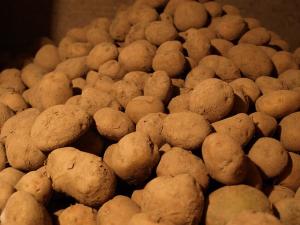- 13 reads

For thousands of years, we have been utilizing cool underground temperatures to refrigerate our fall harvest to last throughout the winter. Once in place, it is a low-tech, low energy and low maintenance way to preserve your food year round.
While canning and jarring can be a costly and timely way to preserve food, investing in building a root cellar eliminates the need and allows you to eat the food fresh. It also reduces the amount of energy that is spent on boiling the water and the expense of jars and lids. Having a root cellar allows you to maximize the storage space in your home to be utilized for other things that you may need.
Importance
Root cellars can be incorporated into your already existent basement or can be built outside of the home, in your backyard. They are useful for both city dwellers, as well as those intending to live off-the-grid. Since they do not require any electricity, they do not need to be placed near electricity lines — although doing so can be handy if you are wanting to install lighting or an automated ventilation system.
Many farmers have been using root cellars for hundreds of years. If you are thinking about installing one on a recently inherited or purchased farm, consider attempting to find old geocaches on the grounds where there may already be an existing cellar. As a farmer, there is likely to be more than you or your family can stand to eat when in season. Storing them in the cellar takes away the limiting factor when you have a particularly large peach harvest, or if you are motivated to buy bushels of vegetables from the farmer’s market when they are in season. It is more cost effective to buy large amounts of vegetables when they are fresh, in season and at their lower prices of the year and store them for use throughout the colder months.
Humidity
Root cellars should have a humidity level of 90-95 percent. At this high humidity level, it will keep root vegetables and leafy greens moist enough to keep them from shriveling and becoming inedible. Different fruits and vegetables will require different storage requirements. Onions and garlic can benefit from much lower humidity levels and prefer it to be around the 60 percent mark, while brussel sprouts will need to be wrapped before storing.
When designing your cellar, it is the best practice to have a natural floor made of dirt or a mixture of dirt and gravel. When additional humidity is needed, it allows you to moisten the floor by simply watering the ground to increase humidity within the space. To add support and structure to the walls, place a frame against the wall and then cover it in packed dirt or stones that retain moisture. When using your basement, an unfinished concrete area is ideal for retaining moisture, if you aren’t using a pre-fabricated design.
Ventilation
Build in a proper ventilation system into your cellar's design. The fruits and vegetables will continue to exchange gases even after they are removed from the soil. A ventilation system is important to release heat, intake oxygen and allow gases such as CO2 and ethylene to migrate out. The typical method to support this air exchange is to place air tubes within the walls with a vent at floor level and a vent that exits at ground level. Without proper ventilation there is also a high risk for mold and bacteria to grow, which will put your stored foods at risk for rot and decay, rendering them inedible.
Design
Your cellar will likely only need one light for a space if it is about 8’ x 10’ in size. Light is your stored food’s enemy. It can cause it spoil, and light exposure to canned or jarred goods can deplete the nutrients preserved in their jars. You can use that one light to add heat if your space ever becomes too cold, but is otherwise going to be used pretty infrequently. If you do not have access to electricity, consider having a designated storage space for a lantern or headlamp, for when you need to access your cellar.
Being humid, damp, and dark, stairs are an area for concern. You want to consider this in your design and avoid slippery surfaces to make sure that the staircase leading into your cellar is safe. Avoid surfaces that may become a hazard when wet, such as slick rock or concrete. Wooden stairs are known to rot and break over time. Rough stone steps are a great option and are easily sourced.
Pre-Fab Option
If you are wary of designing your own root cellar, there are options available for purchase if you are willing to pay the heavy price tag. Pre-fabricated options, like the Groundfridge, are designed to be simply placed in the ground. Due to the fact that cellars do not require electricity, there is no wiring or complicated issues besides finding a place to put it. The Groundfridge covers enough space to hold twenty refrigerators full of food, but the cost of the design is high. For $10,000, some Belgium and Netherland residents are giving this pre-fab a try.
Having your own root cellar is like having your own grocery store, nestled into your own backyard or basement. The availability of fresh produce is welcome as the months grow colder and the prices of fruits and vegetables go up. The key to root cellar success is a game of trial and error combined with vast amounts of research. Make sure to pass along the tricks of the trade to other food storers that you meet along the way on your root cellar journey.

